Rio has a new cosmopolitan edge, with a reinvigorated downtown, recently opened museums and a diverse cuisine that ranges from Amazonian to old-school European. Video by the New York Times.
Of all the competing images that swirl in your head at the mention of Rio, the most irresistible is Carnaval, with its armies of scantily clad men and women, beaming and dancing to the thrum of samba. Rio's week-long celebration of the senses begins on the Friday before Ash Wednesday (February 10 in 2016). Seats at the famous Sambadrome start at $85, but go for up to 10 times that amount officially, and much more unofficially, to see the various samba schools display their wares in all-night parades. It's hard to find even three-star hotels under $500.
See rio-carnival.net.
You've seen it so many times before you arrive, then you see it from every angle on the street, standing like a guardian angel over the city. Don't miss this marvel of machismo and engineering, which was instigated by the Catholic Circle of Rio to combat godlessness in society. It took nine years to build and opened in 1931. The cable car provides breathtaking panoramas of Rio, but once you're at the summit, you almost forget about the views below. The statue is huge, humbling and awesome to behold. How did they build it, all the way up here? Get there early to avoid the hordes. It's best to book online a few days before. Rides leave every 15 minutes, and good luck with the online form.
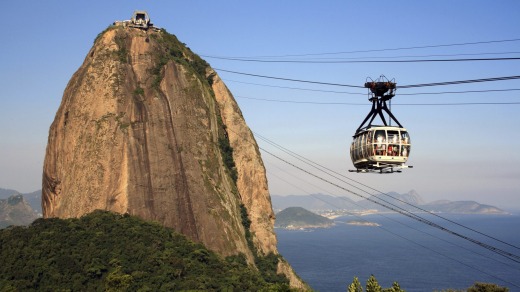
See corcovado.com.br.
The second of Rio's twin peaks, Sugarloaf sits adjacent to the lagoon and provides a spectacular bookend to the statue of Christ the Redeemer with a two-stage cable car, which opened in 1912. Book online or arrive early to get on a cable car up to the first station, at 220 metres, which has gorgeous views over the beach coastline and harbour, but be prepared for some haze. The second car up to the summit, at 528 metres, which has its own long queue, provides even broader views to some harbour beaches and across to the satellite city of Niteroi. There's a cafe up the top, where you can enjoy a passable meal if you want to spend time up there, but factor in some waiting time to come down. The queue is almost as long as the one going up.
See bondinho.com.br.
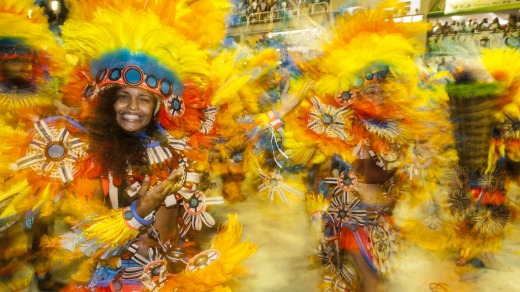
A gentle crescent of sand four kilometres long, Copacabana Beach is the spiritual and sensual epicentre of Rio. It's warm enough to swim there during winter. The waves are big enough for a surf and gentle enough for a wade and peak around. Although the locals do venture into the surf, most of the activity is on the beach, where men of all ages play a skilful hybrid of football and volleyball, and women nurture their suntans and G-strings. Behind the beach a line of cafe-kiosks runs along the promenade. If you can resist the street vendors hawking grilled prawns and lobsters, sit down at a kiosk and devour one of life's great vistas.
For a more elegant slice of beach life, stroll down the promenade, with its 1930s black-and-white geometric wave motif, past the skateboarders and rollerbladers, to Ipanema and Leblon beaches, where the eye candy is less obvious, but the beachfront buildings radiate the bygone charm of a 1960s advertising poster. Both beaches are less crowded and backed by trendy designer shopping precincts. For an evening drink and meal, try the art-deco-inspired Bar Astor.
See barastor.com.br.

Brazil's national cocktail is made from cachaca, a sugar-cane liquor, sugar and lime, and is prepared by smashing the fruit and the sugar together, and adding the liquor. This can be made into a single glass, usually large. Caipirinha is cheap and powerful, and can be found at almost every bar in the city. It's best to drink it somewhere close to the water, looking out over a warm sunset, with a steak sizzling at your table.
For a taste of old-world elegance, you can't go past the Copacabana Palace hotel, opened in 1923 to attract the rich and famous from America and beyond. A glistening white castle that fell into neglect when Brasilia became the national capital in 1960, the hotel has now been restored to its original glory by an international chain. Have lunch at the brasserie around the courtyard pool and watch rich men smoke fat cigars while their wives lie on divans in white towelling coats and their nannies take the children for a swim. The food is delicious and reasonably priced, and the coffee excellent.
See belmond.com
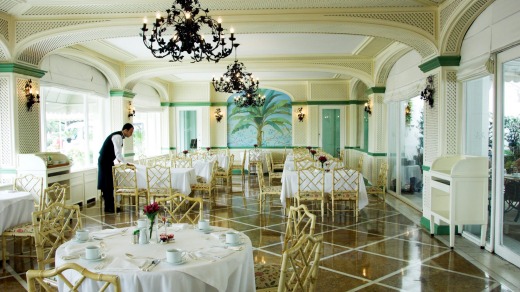
Translated as The Girl From Ipanema, this bar and grill is where the song of that name was written in the early 1960s and made into a worldwide hit by Astrud Gilberto. Today the Garota is a colourful temple to everything about the spirit of Brazil when everyone went ah! Decorated with historic photos of the songwriters, Antonio Carlos Jobim and Vinicius de Moraes, writing at the bar, original music and lyric sheets, articles about the actual girl, and design motifs from the time, this place guarantees to make you feel happy about life every time you step in and out the doors.
See bargarotadeipanema.com.
Built for the 1950 World Cup, the original Maracana was so vast that it held 199,000 fans in the final that Brazil lost to Uruguay. Out of that unthinkable defeat and the mind-boggling crowd, Maracana became the spiritual home of football, not just in Brazil, but perhaps around the world. Nowadays, the modernised version holds 80,000. It's an amazingly intimate arena, shaped like a soup bowl and affording even the furthest seats a decent view. Go to a match, with Brazil playing anyone, but hopefully against Argentina, and feel the passion. There's a museum at the stadium that captures all Brazil's World Cup glories, and engravings of the magical feet of its stars.

See stadiumguide.com/maracana.
Brazil is renowned for its barbecued restaurants that grill everything from meat to seafood, and serve it to you on skewers accompanied by spices and cheese, usually in all-you-can eat buffets. The meat is typically well salted to draw out delicious flavours in the different cuts. Churrascarias can be found all around Rio. Porcao in Ipanema is an established go-to destination for many tourists, but Churrascaria Carretao in Copacabana and Ipanema is also worth trying.
See porcao.com.br, carretaochurrascaria.com.br.
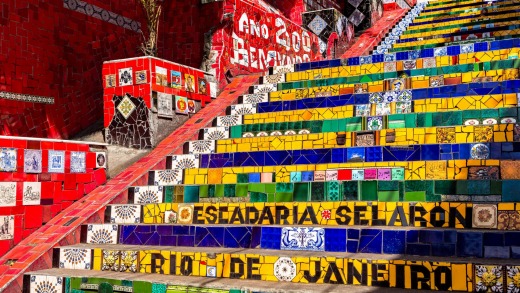
Another symbol of colonial glory is the Confeitaria Colombo, a confectionery house, cafe and restaurant lavishly decorated in the Belle Epoque style. Tucked away in a nondescript road in the Centro precinct, it is easy to miss, but step inside and it's easy to see why it's filled with tourists. The displays of sweets and cakes are mouth-watering, the ground-floor cafe is staffed by waiters in black-and-white livery, and high above is a stunning stained-glass ceiling. Sure, the sandwiches and grills are pleasant at best, and the pastries are overpriced, but for an afternoon of pampering, this hits the spot.
See confeitariacolombo.com.br.
The hillside neighbourhood of Santa Teresa was originally an area of farms and woods, where runaway slaves sought refuge. In the 1960s, artists, writers and musicians were drawn to its cheap, rundown accommodation. Today it remains a bohemian village, whose narrow, cobblestone streets are filled with craft and art galleries, football street murals and serious graffiti artists who work on scaffolding to rejuvenate unsightly tenements. Although the old tram service stopped running four years ago after an accident, officials are trying to revive it for the Olympic Games. The bus ride along the tram track takes you to the main square.
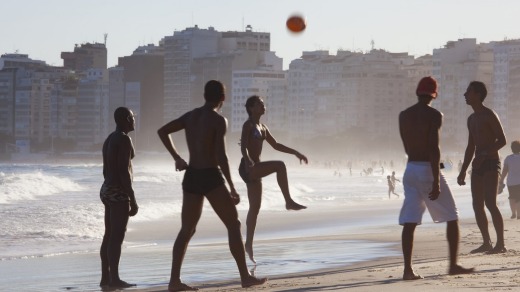
The ideal way to return to the city from Santa Teresa is a leisurely walk down the famous Selaron Steps, an exuberant work of street art by Chilean artist Jorge Selaron, who moved to Rio in 1983 in a tiny house just in front of the desolate stairway. Selaron covered more than 200 steps with bright-red majolica collected in urban areas of Rio or donated by visitors from around the world in a "tribute to the Brazilian people". With cameo tiles of everyone from the Three Stooges to golfer Jack Nicklaus, the steps are so irresistibly bright that you want to walk back up them just to have the pleasure of walking down again. Selaron died in 2013, his body found on the steps. Speculation continues over whether he was killed or took his own life.
At the bottom of the Selaron Steps, near Rio's huge, white aqueduct, is the heart of Lapa, a neighbourhood of rundown mansions that have been reborn as teeming samba clubs. Everyone should go to the main square, Largo da Lapa, especially on a Friday night, when it is packed with clubbers, partygoers and revellers. Arrive early to get into "it" clubs such as Democraticos, Rio Scenarium, Carioca da Gema and Leviano, or expect long queues to get in. They're open all night, so you have plenty of time. For a brief time-filler, have a game of eight-ball in the numerous pool halls along the streets.
See rioscenarium.com.br, clubedosdemocraticos.com.br.
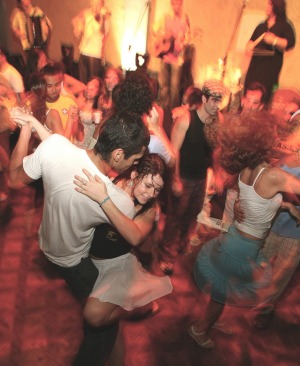
This lovely fishing village, about 180 kilometres north of the city, was discovered by Brigitte Bardot in the 1960s and is still a lovely, but upmarket resort. Buzios offers a spider's web of limpid beaches, some still empty, a chic shopping strip, some impressive restaurants and a bustling nightlife. Accommodation is pricey in summer, but affordable in winter, when the water is still warm enough for swimming. Buzios is accessible from Rio's main bus terminal. Buses leave frequently throughout the day.
See buziosonline.com.br.
A prison island until 20 years ago, Ilha Grande is regularly listed among the world's most beautiful beaches. An easy ferry ride from Rio (take a bus, then a boat: four hours in total), the island is consciously low key, with modest hostels and pousadas. There are no roads and motor cars are banned. Besides the beaches, Ilha Grande offers great forest walks, diving and marine life, and the vibe is youthful and laid-back, with plenty of live music in the main harbour town.
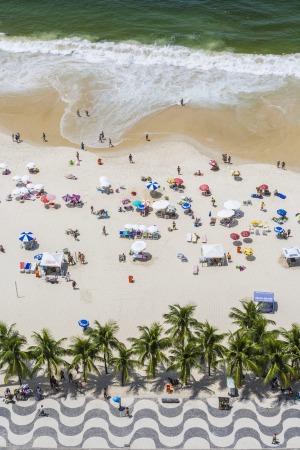
See hotel-ilhagrande.com.
An old colonial village about five hours' bus ride south of Rio (you can also catch a boat from Ilha Grande), Paraty is a beautiful beach town, where local artists and forest life vie for your attention. Behind its gorgeous coastal setting, jungled mountains and waterfalls provide refreshing day trips, as do the myriad islands dotted around the coast. If you visiting in summer, Paraty also has an exuberant mud festival in February.
See paraty.tur.br.
Niteroi is just across the harbour from Rio, but it warrants a day trip to visit the Museum of Contemporary Art, the famous "flying saucer museum" designed by legendary architect Oscar Niemeyer, who created the Brazilian capital, Brasilia, in the 1960s. The museum is irresistibly romantic, a temple of modernism built onto a cliff, with a beach below. From a distance, it stands like an otherworldly obelisk. The museum has a stylish cafe, which has beautiful views around the harbour and Niteroi beachfront. Pop into the Hotel Niteroi around the corner, and enjoy a drink at the rooftop infinity pool with a bird's-eye view of the panorama.
See macniteroi.com.br.
Rio consists of 500 different favelas, or shanty towns, which provide a stark contrast with mainstream life in the city. In recent years, the favelas surrounding Rio have become more urbanised, with the building of some houses, installation of electricity, running water and proper sanitation. There are several tour companies. Rocinha, the largest in Brazil, became a pacified favela in 2011, and has had a police base since then.
See favelatour.com.br.
The lagoon known as Lagoa arches from Ipanema to the Botanical Garden and the fashionable district of Humaita, home to a robust food market at weekends and trendy bars and cafes. The walk around the lagoon, sprinkled with upmarket apartment blocks, kiosks and street art, is a refreshing way to get a sense of Rio's scale and topography, providing views of everything from Sugarloaf to the favelas. Unfortunately, the lagoon is polluted and authorities are working frantically to remedy the problem before the Olympics in August 2016. For some quiet time, head to the Botanic Garden, full of lush vegetation, peaceful alcoves and hip bakeries (Google bakery Le Pain du Lapin or restaurant Frontera).